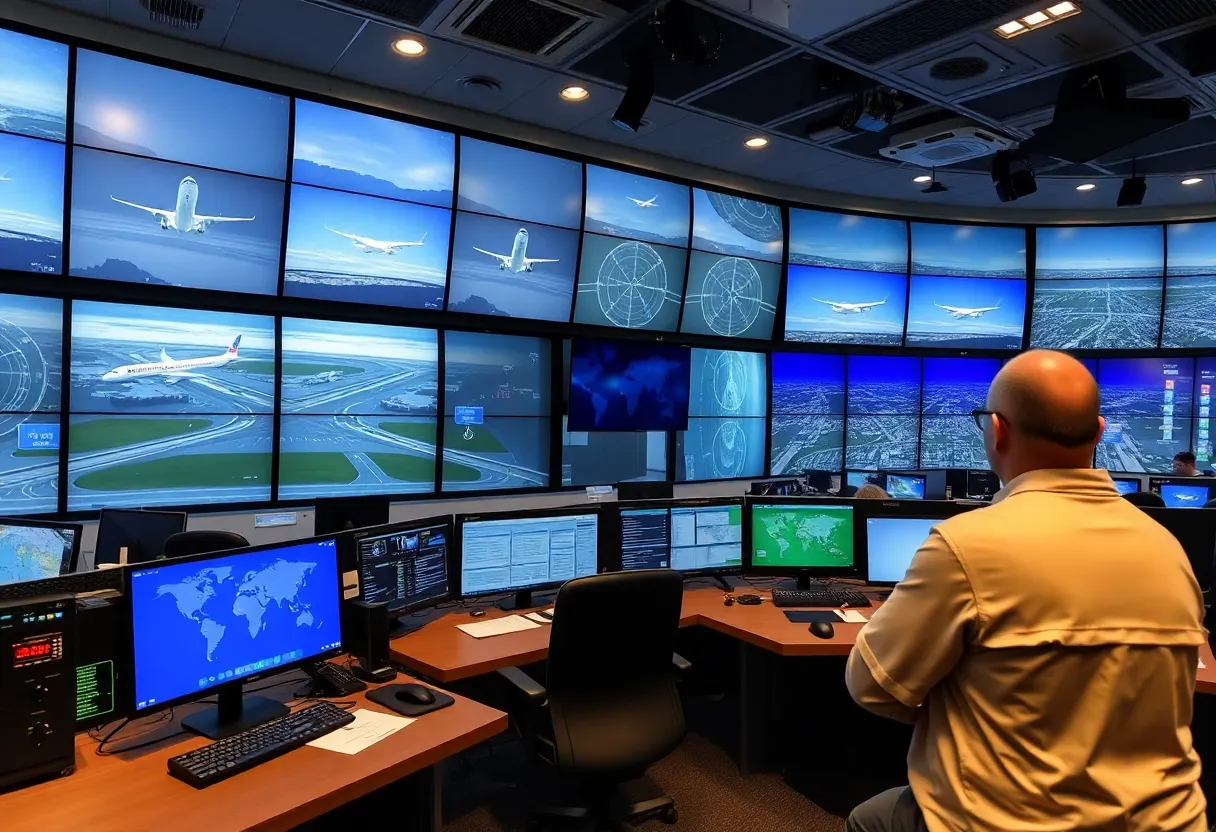News Summary
Transportation Secretary Sean D. Duffy has unveiled a significant modernization plan for the U.S. air traffic control system following recent safety concerns, including a radar failure at Newark Liberty Airport. The plan involves investing billions of dollars to create new control centers and replace outdated equipment, aiming to enhance safety and efficiency in air travel. Despite a turbulent environment within the FAA, an initial funding proposal of $12.5 billion has been approved to initiate these critical upgrades, though challenges with past modernization efforts and staffing hurdles remain.
Big Changes Coming to U.S. Air Traffic Control System
In a bold move to tackle the many issues plaguing the U.S. air traffic control system, Transportation Secretary Sean D. Duffy has announced an ambitious modernization plan. This comes in the wake of significant safety concerns, especially following a recent radar system failure at Newark Liberty International Airport that caused widespread chaos and delayed thousands of flights.
What’s Wrong with the Current System?
Transportation Secretary Duffy made it clear that the air traffic control technology we have right now is outdated, drawing a comparison to a vehicle from the 1960s! Much of the equipment in use dates back to the 1970s, highlighting the urgent need for change. As aviation safety remains a pressing concern, particularly after a tragic midair collision in January 2023 that claimed 67 lives, the call for modernization has never been louder.
The Overhaul in Focus
So what does this new plan entail? First off, the government intends to invest billions of dollars to address these issues effectively. The proposal includes the construction of six new air traffic control centers and the replacement of over 600 radar systems with the latest technology across more than 4,600 sites! This is expected to directly impact the safety and efficiency of air travel in the U.S.
A Roller Coaster Ride for the FAA
All this change comes amid chaos within the Federal Aviation Administration (FAA). There have been several high-profile departures of agency leaders, raising eyebrows about the FAA’s ability to manage this significant overhaul while facing substantial staffing challenges. With the organization already strained, the necessity for stable management becomes even more critical.
Funding the Future
In a positive step, the House Transportation Committee has green-lighted a proposal that includes a $12.5 billion initial funding boost to kickstart this overdue modernization process. However, Duffy emphasizes the need for immediate financial support and streamlined procedures from Congress to ensure these projects can be completed swiftly and efficiently.
Previous Efforts and Ongoing Challenges
It’s worth noting that past attempts at modernization have failed to deliver substantial improvements despite considerable investments. Additionally, a turnover crisis at the FAA means that numerous key management spots are unfilled, which affects overall operational effectiveness. With ongoing staffing cuts, the remaining employees often experience increasing stress and uncertainty, potentially compromising aviation safety.
Concerns About Contractors and Implementation
Recent reports have highlighted issues with current contractors, such as Verizon, who are responsible for upgrades to the air traffic control systems. There’s growing concern about whether these contractors are adequately equipped to handle the demands of such a critical project. As the FAA has been labeled as having “high-risk” modernization projects for decades, implementing a solution without creating further disruptions will undoubtedly be a tricky balancing act.
The Path Ahead
The modernization plan aims to integrate fiber, wireless, and satellite technologies into the existing infrastructure—a move that could drastically enhance safety and efficiency. As Duffy works to address the staffing crisis through recruiting efforts, including attractive bonuses and expedited hiring, there is palpable optimism that the overhaul will inject much-needed vitality into the air traffic control landscape.
A Bright Future for Air Travel?
While many are hopefully looking toward this future, critics remain cautious about the timeline and scope of such a complicated system upgrade. Ensuring a seamless transition without disrupting current operations is no small feat. However, with commitment and careful planning, we might just be able to turn the tide and build an air traffic control system that meets modern standards for years to come. Buckle up, folks—the skies could be getting a whole lot safer soon!
Deeper Dive: News & Info About This Topic
- Reuters: U.S. Transportation Chief Calls for Overhaul of Air Traffic Control System
- Washington Post: Air Traffic Modernization Plan
- NBC Washington: White House Air Traffic Control System Cost Billions
- Washington Times: Sean Duffy Unveils Plan for New Air Traffic Control System
- Travel and Tour World: U.S. Proposes $35 Billion Makeover to Fix Outdated Air Traffic Control
- Wikipedia: Air Traffic Control
- Google Search: Air Traffic Control Modernization
- Google Scholar: Air Traffic Control System Upgrades
- Encyclopedia Britannica: Air Traffic Control
- Google News: Air Traffic Control Updates

Author: STAFF HERE ORLANDO WRITER
ORLANDO STAFF WRITER The ORLANDO STAFF WRITER represents the experienced team at HEREOrlando.com, your go-to source for actionable local news and information in Orlando, Orange County, and beyond. Specializing in "news you can use," we cover essential topics like product reviews for personal and business needs, local business directories, politics, real estate trends, neighborhood insights, and state news affecting the area—with deep expertise drawn from years of dedicated reporting and strong community input, including local press releases and business updates. We deliver top reporting on high-value events such as Orlando International Fringe Theatre Festival, Megacon Orlando, and Central Florida Fair. Our coverage extends to key organizations like the Orlando Economic Partnership and Hispanic Chamber of Commerce Metro Orlando, plus leading businesses in leisure and hospitality that power the local economy such as Walt Disney World Resort, AdventHealth, and Universal Orlando. As part of the broader HERE network, including HEREJacksonville.com, HEREPetersburg.com, HERETallahassee.com, and HERETampa.com, we provide comprehensive, credible insights into Florida's dynamic landscape.




